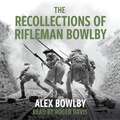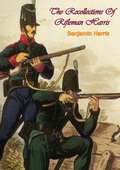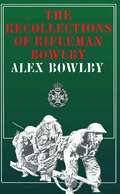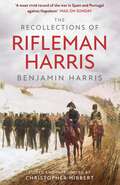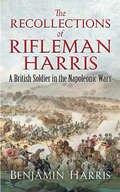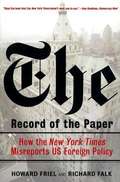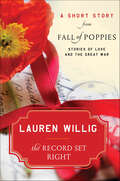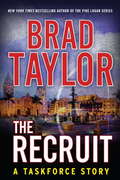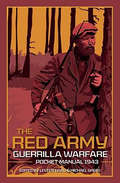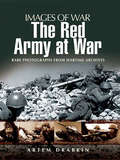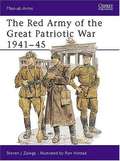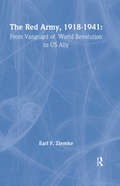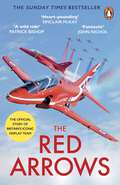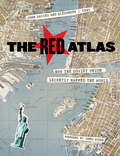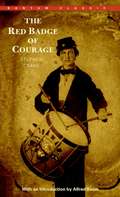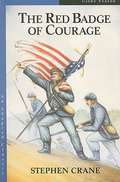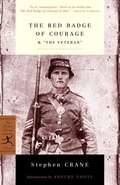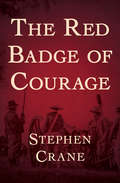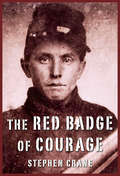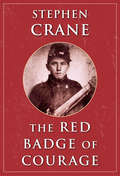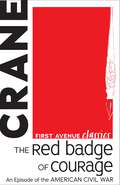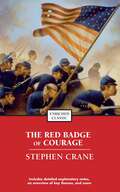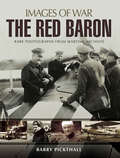- Table View
- List View
The Recollections Of Rifleman Bowlby (W&N Military)
by Alex Bowlby'One of the great Second World War memoirs ... will be read as long as that war is remembered' John Keegan'Extraordinary realism' SUNDAY TIMES'A touch of the Somme and more than a hint of Wilfred Owen' TLSA classic of WWII, this is the vivid memoir of Private Bowlby, who came through the North Africa campaign only to have to battle in bitter fighting against a stubborn and skilled German defence in Italy. It is a truly authentic account of what it was like to fight your way through one of the most gruelling and dangerous campaigns of the Second World War, where so often the hunters became the hunted.A superb first-hand account of the the second world war.
The Recollections Of Rifleman Harris
by Pickle Partners Publishing Captain Henry Curling Benjamin Randell HarrisThis ebook is purpose built and is proof-read and re-type set from the original to provide an outstanding experience of reflowing text for an ebook reader. In an era devoid of modern communication methods, letters and diaries from the literate officer classes of the Napoleonic wars abound ,in all of the languages of the combatant nations. Much less often heard is the voice of the enlisted man, particularly in the British armed forces, an invaluable insight is provided by the recollections of Rifleman Harris late of the 95th Rifles. The often brutal realities of the era were collated by an officer whom he knew, Captain Curling, and published in 1848, and although not well known at the time has become one of the most famous recorded by any rank. One of Harris' first memoires of his time in the army is the devastating spectacle of a firing squad for a court-martial of one of the rank and file and of the court-martial of the bungling General Whitelock whose mishandled expedition to Buenos Ayres. The man from the rank and file was shot, but General Whitelock was merely cashiered, a difference of class and the times unintentionally brought to light. Whitelock's court-martial provides the first appearance of General (at the time Colonel) Craufurd, who went on the expedition with Whitelock and want to have his former commander shot for his ineptitude!, and under whom Harris would spend a great deal of his soldiering career. Harris takes a small part in another expedition to Denmark, but the only sort of action he is involved in is defending a Danish family from the depredations of fellow soldiers. It is however with his entrance into Portugal in 1808, that his adventures really begin to take shape; as his fellow soldiers fall around him at the battles of Roliça and Vimiero he describes the horrific injuries sustained, the plundering of the dead that took place (which he was not above joining in) and the task of the surgeons to try and stitch up the wounded. A large part of the narrative is taken by the retreat of Sir John Moore's army to Coruña, and the Light Brigade's to Vigo. His tales of the retreat are vividly described; from the capture of the French general Lefebvre-Desnouettes at Benavente, the privation, the wifes of the soldiers and their struggle to stay with the column, to the iron resolve of General Craufurd to keep going. Eventually and in a pitiable state Harris reaches Vigo and embarks for England. It was not enemy action that ended Harris' career in the army but diseases contracted during the pestilent 1809 Walcheren campaign, the lingering sickness forced Harris to leave the army and take up trade as a cobbler. A valuable and excellent read. Text taken, whole and complete, from the 1848 edition, published in London by H Hurst. Original - 298 pages. Author- Benjamin Harris (1781-????) Editor - Captain Henry Curling (????-????) Linked TOC.
The Recollections of Rifleman Bowlby (Cassell Military Paperbacks Ser.)
by Alex BowlbyThe classic memoir by an infantryman in the British army during the Second World War, &“a book to bring a shiver to the most grizzled veteran (The Sunday Times). In 1944, having distinguished itself in the North Africa campaign, Rifleman Bowlby&’s battalion of Greenjackets was sent to Italy. But instead of being used in the specialized role for which it had been trained, most of the battalion&’s vehicles were taken away on arrival, and the riflemen were told that they were to be used as ordinary infantry. Stripped of its hard core of regulars, the battalion suffered one disastrous defeat after another until its hard-won reputation fell in tatters. This is a memoir that captures &“quite extraordinary realism in this worm&’s eye view . . . the sweating, slogging, frightened infantryman in conditions of extreme stress and horror&” (The Sunday Times).
The Recollections of Rifleman Harris (MILITARY MEMOIRS)
by Benjamin Randell Harris'Describing narrow squeaks and terrible deprivations, Harris's unflowery account of fortitude and resilience in Spain still bristles with a freshness and an invigorating spikiness' SCOTLAND ON SUNDAY'A most vivid record of the war in Spain and Portugal against Napoleon' MAIL ON SUNDAYBenjamin Harris was a young shepherd from Dorset who joined the army in 1802 and later joined the dashing 95th Rifles. His battalion was ordered to Portugal, where he marched under the burning sun, weighed down by his kit and great-coat, plus all the tools and leather he had to carry as the battalion's cobbler - 'the lapstone I took the liberty of flinging to the Devil'. Rifleman Harris was a natural story-teller with a remarkable tale to unfold, and his Recollections have become one of the most popular military books of all time.
The Recollections of Rifleman Harris (MILITARY MEMOIRS)
by Benjamin Randell Harris'Describing narrow squeaks and terrible deprivations, Harris's unflowery account of fortitude and resilience in Spain still bristles with a freshness and an invigorating spikiness' SCOTLAND ON SUNDAY'A most vivid record of the war in Spain and Portugal against Napoleon' MAIL ON SUNDAYBenjamin Harris was a young shepherd from Dorset who joined the army in 1802 and later joined the dashing 95th Rifles. His battalion was ordered to Portugal, where he marched under the burning sun, weighed down by his kit and great-coat, plus all the tools and leather he had to carry as the battalion's cobbler - 'the lapstone I took the liberty of flinging to the Devil'. Rifleman Harris was a natural story-teller with a remarkable tale to unfold, and his Recollections have become one of the most popular military books of all time.
The Recollections of Rifleman Harris: A British Soldier in the Napoleonic Wars (Dover Military History, Weapons, Armor)
by Benjamin HarrisDiaries, memoirs, and letters by officers of the Napoleonic era abound, but there are few reminiscences by common foot soldiers. This extraordinarily vivid and entirely authentic report by British rifleman Benjamin Harris offers rare glimpses of life among the enlisted men. Harris's personal anecdotes, brimming with ready wit and memorable descriptions, tell of military life from the bottom up: the soldiers' camaraderie amid physical hardships and inadequate supplies and equipment, their endemic drunkenness and frequent hunger, the terrible punishments meted out for even small infractions, and the narrow margin between death and survival.In the mid-1830s, Harris was working as a London cobbler when he met a former British Army officer who asked him to recount his wartime experiences. A natural storyteller with a remarkable tale to tell, Harris recalled his years of active service, which began in 1803 when he joined the 95th Regiment of Foot in Ireland and were followed by campaigns from 1808 to 1809 in Portugal and Spain. First published in 1848, this memoir was neither popular nor well received during Harris's lifetime, but since its rediscovery in the early twentieth century, it has become one of the most valuable documents of the Peninsular War.
The Record Of The Paper: How The New York Times Misreports U.S. Foreign Policy
by Howard Friel Richard FalkOn May 26, 2004, the New York Times issued an apology for its coverage of Iraq's purported weapons of mass destruction. The Times had failed to provide what most readers expect from the US newspaper of record: journalistic accuracy and integrity about important matters of US foreign policy. But the Times' coverage of Iraq was worse than they were willing to concede. In fact, for at least the past fifty years the editorial policy of the Times--from its coverage of the 1954 Geneva Accords on Vietnam to the issue of torture in Abu Ghraib--has failed to incorporate international law into its coverage of US foreign policy. This lapse, as the authors demonstrate, has profound implications for the quality of the Times' journalism and the function of the press in a country supposedly governed by the rule of law. In this meticulously researched study, Howard Friel and Richard Falk reveal how the Times has consistently misreported major US foreign policy issues, including the bombing of North Vietnam in response to the Tonkin Gulf and Pleiku incidents in 1964-65, the Reagan administration's policy toward the Sandinista government of Nicaragua in the 1980s, the 2002 military coup that briefly overthrew Hugo Chavez, Venezuela's elected president, and the Bush administration's 2003 invasion of Iraq.
The Record Set Right: A Short Story from Fall of Poppies
by Lauren WilligIn a short story from New York Times bestselling author Lauren Willig, a woman discovers it’s never too late to make things rightShe's the widow of the Aviator in the Iron Mask-- a British World War I hero whose exploits both on the field and off of it made the papers on two continents. But was their Armistice Day engagement really the romantic fantasy it seemed? A lifetime later, Camilla Frobisher is forced to retrace the steps of her past-- all the way back to November 11, 1918, the day her life changed forever.
The Recruit
by Brad TaylorRetired Delta Force officer Brad Taylor's exciting new short story features Taskforce operators Knuckles and Decoy, as the two stumble upon an audacious plot when they least expect it. Includes an exclusive preview of Brad Taylor's eighth Pike Logan thriller, The Insider Threat, coming June 30, 2015. When Taskforce operator Knuckles brings his old friend Decoy, a former teammate from the Navy SEALs, to Lima, Peru, he wonders if he's made a mistake. Knuckles' only objective is to assess Decoy's covert surveillance skills on an orientation deployment, the final step before any recruit is accepted into the extralegal counterterrorist organization known as the Taskforce. Just when Decoy's wild side threatens to expose their cover as technicians working for the embassy--and derail his chances of becoming a full member of the Taskforce--the two uncover an unexpected piece of intelligence involving the terrorist group, the Shining Path, that causes their mission to go from evaluation to operational. With no backup and a flimsy cover story, Knuckles and Decoy find themselves in murky territory, relying on the help of an untried asset to prevent a devastating attack on countless innocents.
The Recruit: A Taskforce Story, Featuring an Excerpt from The Forgotten Soldier
by Brad TaylorRetired Delta Force officer Brad Taylor's exciting new short story features Taskforce operators Knuckles and Decoy, as the two stumble upon an audacious plot when they least expect it. Includes an excerpt of Brad Taylor's latest Pike Logan novel, The Forgotten Soldier, on sale 12/29/2015. When Taskforce operator Knuckles brings his old friend Decoy, a former teammate from the Navy SEALs, to Lima, Peru, he wonders if he's made a mistake. Knuckles' only objective is to assess Decoy's covert surveillance skills on an orientation deployment, the final step before any recruit is accepted into the extralegal counterterrorist organization known as the Taskforce. Just when Decoy's wild side threatens to expose their cover as technicians working for the embassy--and derail his chances of becoming a full member of the Taskforce--the two uncover an unexpected piece of intelligence involving the terrorist group, the Shining Path, that causes their mission to go from evaluation to operational. With no backup and a flimsy cover story, Knuckles and Decoy find themselves in murky territory, relying on the help of an untried asset to prevent a devastating attack on countless innocents.
The Red Army Guerrilla Warfare Pocket Manual, 1943 (The Pocket Manual Series)
by Lester GrauThe indispensable guerilla warfare manual, first developed by the Russian military during WWII—with a thorough introduction on its legendary history. During the Second World War, the Red Army developed The Partisan's Companion to train Soviet guerillas to fight Nazi invaders It contains the Soviet lessons of two bitter years of war, covering field craft, guerilla tactics, German counter-guerrilla tactics, demolitions, German and Soviet weapons, scouting, camouflage, anti-tank warfare and anti-aircraft defense for squad and platoon-level instruction. It proved so effective that it was later used to train Third World guerrillas in their wars of national liberation during the 1950s–70s, and even the Fedayeen guerrillas who fought US and coalition forces in Iraq. The Soviet partisans moved and lived clandestinely, harassed the enemy, and supported the Red Army through reconnaissance and attacks on German supply lines. They clearly frustrated German logistics and forced the Germans to periodically sideline divisions for rear-area security. The partisans and their handbook were a vital part of the eventual Soviet victory over Germany. This pocket manual puts The Partisan's Companion in context, explaining its importance.
The Red Army at War: Rare Photographs From Wartime Archives (Images Of War Ser.)
by Artem DrabkinWhat was life in the Red Army like for the ordinary soldier during the Great Patriotic War, the fight between the Soviet Union and Germany on the Eastern Front? How far is the common perception of Red Army heroism and sacrifice borne out by historical reality? And what was the daily experience of the individual soldier caught up in this immense and ruthless conflict? The 160 contemporary photographs from the Russian archives that have been selected for this book give a striking insight into all sides of wartime service for the Soviet soldier. The whole range of military experience is portrayed here, from recruitment and the rigors of training to transport, marching and the ordeal of combat.
The Red Army of the Great Patriotic War, 1941-45
by Steven J. ZalogaThe German invasion in 1941 led to a series of staggering defeats for the Russians. In the first five months of fighting, the Soviets lost about four million men, amounting to 80 per cent of the total strength of the ground forces at the time of the outbreak of the war. Yet the Red Army managed to hold on. The Soviets had been steadily growing throughout in capability and effectiveness, and after the smashing of the German offensive at the battle of the Kursk salient, they were never again seriously checked, advancing to the ruins of Berlin itself. This title examines the organisation, equipment and uniforms of the Red Army of the Great Patriotic War.
The Red Army, 1918-1941: From Vanguard of World Revolution to America's Ally
by Earl F ZiemkeSupported in large part by evidence released after the collapse of the Soviet Union, this book follows the career of the Red Army from its birth in 1918 as the designated vanguard of world revolution to its affiliation in 1941 with 'the citadel of capitalism', the United States. Effectiveness of leadership and military doctrine are particular conce
The Red Arrows: The Sunday Times Bestseller
by David MontenegroSUNDAY TIMES TOP TEN BESTSELLERDAILY MAIL BOOK OF THE WEEKTHE FIRST OFFICIAL HISTORY OF THE RED ARROWS'Heart-pounding, exhilarating . . . A fascinating testimony of jeopardy, cool heads and the sheer exultant addiction of flying.' SINCLAIR MCKAY'Fantastic . . . It was wonderful to read about so many old chums and truly legendary aviators. Highly recommended.' JOHN NICHOL (Twitter)'An exhilarating read! The next-best thing to taking the controls of a Hawk fast-jet. And you're much less likely to throw up.' BEN MILLER'Inspirational . . . Precision, style and dedication. The Red Arrows are the ultimate in teamwork.' TIM PEAKE'Perfectly enjoyable . . . As the Red Arrows head towards their 60th anniversary, it's clear the team's place in our hearts is secure.' DAILY MAIL'A wild ride . . . The ultimate insider guide, relating with great enthusiasm and insight what it means to be inside the cockpit as you scream through the skies at 350 to 450 miles per hour, within what feels like touching distance of your wingman, making continual nanosecond decisions that will result in certain death if you get them wrong.' TELEGRAPH, Patrick Bishop_________________________________________"Occasionally, you and the team come within read of perfection, up there in the rarefied air of the skies. You never know when those moments will come, but it's what you yearn for as a pilot."The Red Arrows represent the very best speed, agility and precision aerobatic flying in the Royal Air Force, and the people who wear those iconic red flight suits are rigorously selected not just for their flying skills, lightning-fast reflexes and nerves of steel, but for their mental resilience, courage and humility.Written by the Officer Commanding and former Red 1 Team Leader, Wing Commander David Montenegro, and full of never-before-shared tales from pilots past and present, this thrilling history is both a faithful record and a fascinating account of not only what it takes, but what it means, to be a Red Arrow._________________________________________Praise for the Red Arrows:'A lifetime's ambition . . . I still can't believe I've been in a fighter jet. It was fantastic - just to feel the G-force was spectacular.' LEWIS HAMILTON'So tight, crisp and professional' CHRIS HADFIELD'I can never quite believe that anyone can fly and aircraft with such precision' PROF. BRIAN COX'The skill level they have is just off the scale. The Red Arrows is an amazing display of quality' DAVID COULTHARD
The Red Atlas: How the Soviet Union Secretly Mapped the World
by James Risen John Davies Alexander J. KentNearly thirty years after the end of the Cold War, its legacy and the accompanying Russian-American tension continues to loom large. Russia’s access to detailed information on the United States and its allies may not seem so shocking in this day of data clouds and leaks, but long before we had satellite imagery of any neighborhood at a finger’s reach, the amount the Soviet government knew about your family’s city, street, and even your home would astonish you. Revealing how this was possible, The Red Atlas is the never-before-told story of the most comprehensive mapping endeavor in history and the surprising maps that resulted. From 1950 to 1990, the Soviet Army conducted a global topographic mapping program, creating large-scale maps for much of the world that included a diversity of detail that would have supported a full range of military planning. For big cities like New York, DC, and London to towns like Pontiac, MI and Galveston, TX, the Soviets gathered enough information to create street-level maps. What they chose to include on these maps can seem obvious like locations of factories and ports, or more surprising, such as building heights, road widths, and bridge capacities. Some of the detail suggests early satellite technology, while other specifics, like detailed depictions of depths and channels around rivers and harbors, could only have been gained by actual Soviet feet on the ground. The Red Atlas includes over 350 extracts from these incredible Cold War maps, exploring their provenance and cartographic techniques as well as what they can tell us about their makers and the Soviet initiatives that were going on all around us. A fantastic historical document of an era that sometimes seems less distant, The Red Atlas offers an uncanny view of the world through the eyes of Soviet strategists and spies.
The Red Badge of Courage
by Stephen CraneThe Red Badge of Courage was published in 1895, when its author, an impoverished writer living a bohemian life in New York, was only twenty-three. It immediately became a bestseller, and Stephen Crane became famous. Crane set out to create "a psychological portrayal of fear." Henry Fleming, a Union Army volunteer in the Civil War, thinks "that perhaps in a battle he might run....As far as war was concerned he knew nothing of himself." And he does run in his first battle, full of fear and then remorse. He encounters a grotesquely rotting corpse propped against a tree, and a column of wounded men, one of whom is a friend who dies horribly in front of him. Fleming receives his own "red badge" when a fellow soldier hits him in the head with a gun. "The idea of falling like heroes on ceremonial battlefields," Ford Madox Ford remarked later, "was gone forever." Shelby Foote, author of The Civil The Modern Library has played a significant role in American cultural life for the better part of a century. The series was founded in 1917 by the publishers Boni and Liveright and eight years later acquired by Bennett Cerf and Donald Klopfer. It provided the foundation for their next publishing venture, Random House. The Modern Library has been a staple of the American book trade, providing readers with afford-able hardbound editions of impor-tant works of literature and thought. For the Modern Library's seventy-fifth anniversary, Random House redesigned the series, restoringas its emblem the running torch-bearer created by Lucian Bernhard in 1925 and refurbishing jackets, bindings, and type, as well as inau-gurating a new program of selecting titles. The Modern Library continues to provide the world's best books, at the best prices.
The Red Badge of Courage (An Adapted Classic)
by Stephen CraneThe story of one young man's experience during the Civil War. This version is adapted for easier reading. There is a study guide at the end. Note that there are errors in the original book, especially in the Table Contents (Chapter 17 is listed twice. The second one is really Chapter 19.)
The Red Badge of Courage and "The Veteran": An Episode of the American Civil War
by Stephen CraneAn account of the brutal and terrifying nature of war zone, during the great Civil war, narrated through the eyes of a young soldier.
The Red Badge of Courage: An Episode Of The American Civil War
by Stephen CraneThe finest novel of the Civil War, and one of the greatest battle stories ever toldThe question of courage enters Henry Fleming&’s mind the moment he dons the blue uniform of the Union Army. But his first firefight reveals the emptiness of words such as bravery and fear. Pinned in by his comrades, he can only fire his rifle like a cog in a machine. There is no chance to run.Then comes the true test. Waking from a nap, Henry sees the enemy advancing once again. Gripped by an unshakable terror, he flees—from his regiment, from duty, from everything he wanted to believe about himself. A corpse bears witness to his shame.The nightmare has come true. Henry Fleming is a coward. Only one thing can save him now: a visible wound, the red badge of courage. With his regiment&’s colors in hand, Henry looks the enemy in the eye—and charges.Stephen Crane was born six years after Lee&’s surrender at Appomattox and had yet to see a battlefield when he wrote The Red Badge of Courage. Nevertheless, the novel is widely regarded as one of the most realistic depictions of war ever published, and a masterpiece of American literature.This ebook has been professionally proofread to ensure accuracy and readability on all devices.
The Red Badge of Courage: An Episode Of The American Civil War...
by Stephen CraneThe Red Badge of Courage is the fictionalized account of a Union soldier's life in the American Civil War. It recounts the experiences of lowly private Henry Fleming, who dreams of honour won on the battlefield. His illusions are undone however, when he comes face to face with the horrors of war. Stephen Crane's classic is, with the possible exception of Gone With the Wind, the best-known of all civil war novels.Sayre Street Books offers the world's greatest literature in easy to navigate, beautifully designed digital editions.
The Red Badge of Courage: An Episode Of The American Civil War...
by Stephen CraneThe Red Badge of Courage is the fictionalized account of a Union soldier's life in the American Civil War. It recounts the experiences of lowly private Henry Fleming, who dreams of honour won on the battlefield. His illusions are undone however, when he comes face to face with the horrors of war. Stephen Crane's classic is, with the possible exception of Gone With the Wind, the best-known of all civil war novels.Sayre Street Books offers the world's greatest literature in easy to navigate, beautifully designed digital editions.
The Red Badge of Courage: An Episode of the American Civil War (First Avenue Classics ™)
by Stephen CraneDrawn by visions of glory on the battlefield, Henry Fleming joins the Union Army to fight the Confederates. But his dreams of valor are outweighed by his fear, and after one battle, Harry runs away. As he runs, he meets several wounded men whose "red badges of courage" make him even more ashamed of his cowardice. Henry returns to the front line and, inspired by the men who sacrificed their limbs and lives, fights with a passion he never knew he had. This is an unabridged version of the classic Civil War novel by American author Stephen Crane, first published in 1895.
The Red Badge of Courage: Assessment Manual (Enriched Classics)
by Stephen CraneEnriched Classics offer readers accessible editions of great works of literature enhanced by helpful notes and commentary. Each book includes educational tools alongside the text, enabling students and readers alike to gain a deeper and more developed understanding of the writer and their work.The Red Badge of Courage is a powerful tale of the American Civil War. The book has garnered international acclaim for its realism and psychological depth in telling the story of a young soldier and his reaction to the horrors of war. Enriched Classics enhance your engagement by introducing and explaining the historical and cultural significance of the work, the author’s personal history, and what impact this book had on subsequent scholarship. Each book includes discussion questions that help clarify and reinforce major themes and reading recommendations for further research. Read with confidence.
The Red Baron (Images of War)
by Barry Pickthall“[A] look at the life of Manfred Von Richthofen . . . The book is built from a collection of negatives and prints the author bought at a book fair.” —War History OnlineBeginning his wartime career on the Western Front in August 1916, Manfred von Richthofen, or the Red Baron as he became known, had shot down an impressive total of fifteen aircraft by January 1917, as well as being appointed commander of his own unit. By the time of his death in 1918, he had destroyed a staggering total of eighty allied aircraft. From the perspective of the allies, he was a deadly menace. For the Germans, he was a fighter pilot hero of legendary significance. This fascinating collection of rare images offers a fresh perspective on the Baron himself, as well as a number of his adversaries from the Allied side of the line.Found by chance at a car boot sale by the author, an esteemed journalist and keen amateur aviator, this collection has sat, mostly unused, for almost a century. Until now. This intriguing addition to the Images of War series is set to ignite new discussions about this most legendary of fighter aces since we passed the centenary of his death, and the ending of the First World War, in 2018.
